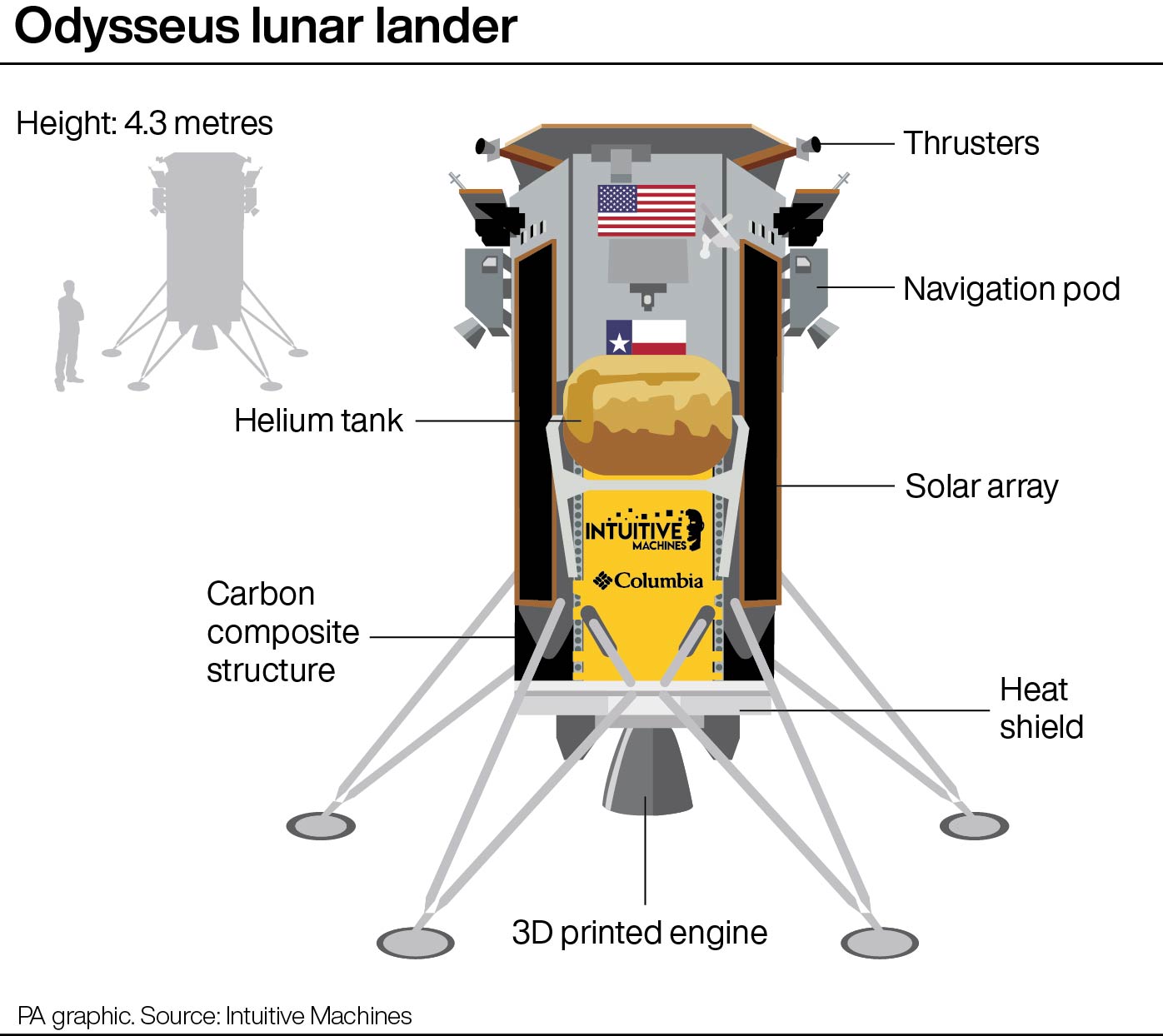Intuitive Machines’ private Moon mission has successfully launched from Earth
The Moon lander had lift-off at 6.05am UK time.

A US private Moon lander has successfully launched 24 hours after its flight was delayed due to fuel issues.
The Nova-C Odysseus lander, built by Texas-based space flight company Intuitive Machines (IM), could become the first private mission – called IM-1 – to land intact on the lunar surface.
The Moon lander lifted off at 6.05am UK time on Thursday on SpaceX’s Falcon 9 rocket from Cape Canaveral in Florida, SpaceX posted on X, formerly Twitter.
The company’s vice president of lunar access Trent Martin was responsible for the countdown as the launch went off on time.
He said: “Godspeed, Odysseus. Now let’s go make history.”
Applause could be heard from the control room as the spacecraft achieved second-stage engine cutoff.
The successful launch comes one month after another US spacecraft, Peregrine, failed to touch down following a fuel leak.
The failure of Peregrine, operated by US company Astrobotic, marked the third time a private company had been unable to achieve a soft landing on the lunar surface.
The Beresheet lander, built by Israel’s SpaceIL, crashed during descent in 2019, while the Hakuto-R M1 lander, from Japanese company ispace, was destroyed while attempting to land in April last year.
Odysseus would be the first US Moon landing since the final mission of the Apollo programme – Apollo 17 – more than 50 years ago.
Odysseus is a hexagonal cylinder about 13ft (4m) tall and 5ft (1.57m) wide and weighs 1,488lb (675kg).
It is part of Nasa’s Commercial Lunar Payload Services initiative, which aims to involve commercial companies in the exploration of the Moon as the space agency focuses on getting astronauts back there through its Artemis programme.
If all goes to plan, Odysseus could attempt a lunar landing on February 22.
The landing site will be at Malapert A, a crater near the Moon’s south pole.
Once it is on the surface, Odysseus will operate for roughly two weeks, or one lunar day.

MDA UK, a Canadian space technology company with offices in Harwell, Oxfordshire, is developing landing sensors for three IM missions – the other two planned for later in the year – with funding from the UK Space Agency (UKSA).
The UKSA has spent £3.4 million, spread across these three missions as part of its partnership with MDA UK.
The lander will also be carrying a sculpture – called Moon Phases – by American artist Jeff Koons.
Odysseus will be insulated with a lightweight fabric – a shimmery gold material that normally lines the insides of ski jackets – made by US sports apparel company Columbia Sportswear.





